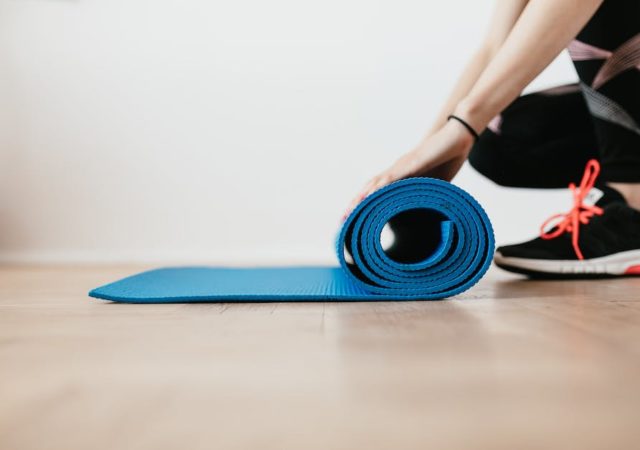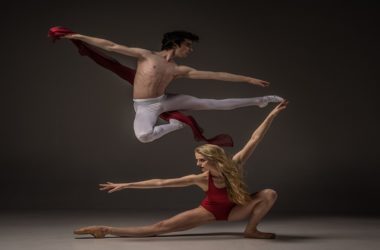Pilates for Athletes: Improving Performance and Preventing Injury
As an athlete, you’re always looking for ways to improve your performance and decrease your risk of injury. Enter Pilates – a form of exercise that’s gaining popularity among athletes, coaches, and physical therapists alike. In this article, we’ll explore how Pilates can benefit athletes in terms of performance and injury prevention, and provide tips for getting started with this dynamic form of strength training.
What is Pilates?
Pilates is a unique form of exercise that was developed in the early 20th century by Joseph H. Pilates. The method emphasizes the importance of the mind-body connection and aims to strengthen the core muscles, improve flexibility, and increase body awareness. The basic principles of Pilates include breathing, concentration, control, precision, centering, and flow.
There are two main types of Pilates – mat work and equipment-based. Mat work includes a series of exercises done on the floor using only body weight, while equipment-based Pilates involves the use of specialized apparatus such as the Reformer and the Cadillac. Both types of Pilates offer challenging workouts that can benefit athletes of all levels and sports.
Importance of Core Strength for Athletes
Core strength – the ability to control and stabilize the muscles in the torso – is essential for various athletic movements such as jumping, running, and twisting. A strong core can help improve balance, agility, and power, while reducing strain on the lower back and other joints. However, traditional core exercises like crunches and planks may not be enough to challenge advanced athletes.
Pilates, on the other hand, offers a unique way to target the deep muscles of the core, including the transversus abdominis, multifidus, and pelvic floor muscles. By focusing on proper alignment and controlled movements, Pilates can help athletes develop a stronger, more stable core that’s better equipped to handle the demands of their sport.
Benefits of Pilates for Athletes
In addition to core strength, Pilates offers numerous benefits for athletes including improved flexibility, better balance, increased strength without bulk, improved posture and alignment, reduced risk of injury, and increased body awareness and mindfulness. These benefits can translate to improved performance on the field or court, and can also help athletes recover from injury more quickly.
For example, Pilates can help runners improve their stride length and reduce the risk of IT band syndrome by targeting the muscles in the hips and legs. Tennis players can improve their serve and backhand by improving their core stability and shoulder mobility. Cyclists can strengthen their glutes and quads, while reducing the risk of lower back pain by improving their spinal alignment and hip mobility.
Pilates Exercises for Athletes
There are many Pilates exercises that are especially beneficial for athletes. For example, the Hundred can help improve core strength and breathing control, while the Roll Up can improve spinal mobility and hamstring flexibility. The Single Leg Stretch and Double Leg Stretch can challenge hip flexor strength and abdominal endurance, while the Teaser can improve full-body coordination and balance.
Each exercise has a specific focus and can help athletes improve their performance and/or prevent injuries. For example, the Swan exercise can help swimmers improve their posture and back strength, while the Leg Circles can improve hip mobility and reduce the risk of groin strains in soccer players.
Pilates for Specific Sports
Pilates can benefit athletes in a variety of sports, from basketball to golf to martial arts. By focusing on sport-specific movements and muscle groups, athletes can use Pilates to enhance their performance and reduce the risk of injury. For example, martial artists can use Pilates to improve their balance and agility, while golfers can use Pilates to improve their rotational power and spinal mobility.
There are many sport-specific Pilates exercises that can help athletes improve their skills and prevent injuries. For example, soccer players can benefit from the Hip Swivel exercise which targets hip mobility and control. Runners can benefit from the Toe Taps exercise which improves hip flexor strength and coordination. Tennis players can benefit from the Spine Twist exercise which improves shoulder rotation and core stability.
Pilates as Cross-Training for Athletes
Pilates can also be used as a form of cross-training for athletes who want to complement their existing workout routine. For example, weightlifters can use Pilates to improve their flexibility and reduce the risk of muscle imbalances, while yoga practitioners can use Pilates to improve their stability and core strength.
By incorporating Pilates into their training regimen, athletes can prevent overuse injuries and avoid burnout. Pilates offers a challenging yet low-impact workout that can help athletes recover and rebuild from intense training sessions.
Getting Started with Pilates
If you’re new to Pilates, there are a few things to keep in mind. First, it’s important to find a qualified instructor who can guide you through the movements and ensure proper form and alignment. Look for a certified Pilates instructor who has experience working with athletes.
Second, start with the basics and work your way up to more advanced movements. Don’t be afraid to modify exercises or use props like blocks or bands to help support your body. Be patient and listen to your body.
Finally, incorporate Pilates into your training regimen 1-2 times per week, depending on your sport and level of fitness. You can do Pilates on your own using a mat or equipment, or attend a group class for motivation and accountability.
Conclusion
In conclusion, Pilates is an excellent form of strength training for athletes looking to improve their performance and reduce their risk of injury. With a focus on core strength, flexibility, balance, and body awareness, Pilates can help athletes of all sports and levels reach their full potential. So why not give Pilates a try and see how it can benefit your athletic performance?





